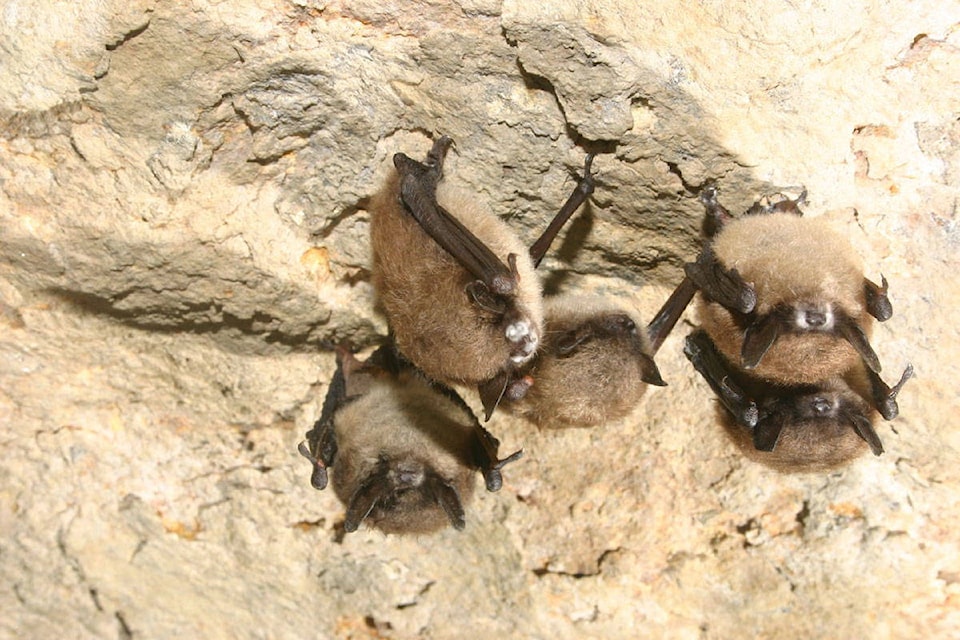Researchers are asking the public to help monitor winter bat activity, with reports of dead bats coming in from Washington state.
The Southern Vancouver Island Community Bat Program run by Habitat Acquisition Trust (HAT) in collaboration with the provincial government is looking for the public’s help to detect white nose syndrome (WNS), a fungal disease that is responsible for the death of millions of bats in eastern North America. The disease has moved to the west coast and has been confirmed in Washington state, 150 kilometres south of the B.C.-U.S. border.
READ ALSO: Public’s help needed in tracking fatal bat disease
According to Habitat Acquisition Trust, the disease has near-100 per cent mortality for some species of bats including the little brown bat, which is known locally.
A new finding this year has confirmed a 13th species in North America – fringed myotis – with the disease. White nose syndrome does not affect humans.
“We believe that our bats hibernate in relatively small groups across the province,” said Paige Erickson-McGee, the bat stewardship coordinator for the Island Community Bat Program. “Detecting WNS in our province will require many eyes on the ground.”
The typical first sign of the disease is bats flying during the winter, which is an unusual sighting when bats should be hibernating, HAT said. Another sign is the appearance of dead bats outdoors.
“We are encouraging the public to report dead bats or any sightings of winter bat activity to the Community Bat Project toll-free phone number, website or e-mail,” Erickson-McGee said. “Bat carcasses will be submitted for testing for white nose syndrome and would provide the earliest indication of the presence of the disease in B.C.”
READ ALSO: Fungus could ‘drastically’ affect B.C. bat populations: researchers
Currently, there are no treatments for white nose syndrome but mitigating threats to bat populations and preserving and restoring bat habitats may give bat populations the chance to overcome the disease.
Erickson-McGee will be presenting the latest research on bat conservation work in North America on Feb. 11 at 7:30 p.m. at the University of Victoria Fraser Building, room 159. The talk will be hosted by the Victoria Natural History Society and is free and open to the public.
Anyone who finds a dead bat is asked to report it to the Community Bat Program by calling 1-855-922-2287 or e-mailing info@bcbats.ca as soon as possible. People are advised to never touch a dead bat with bare hands. If an individual or their pet has been in direct contact with the bat, further information regarding the risk of rabies will be required.
READ ALSO: B.C. man dies from rabies after contact with Vancouver Island bat
